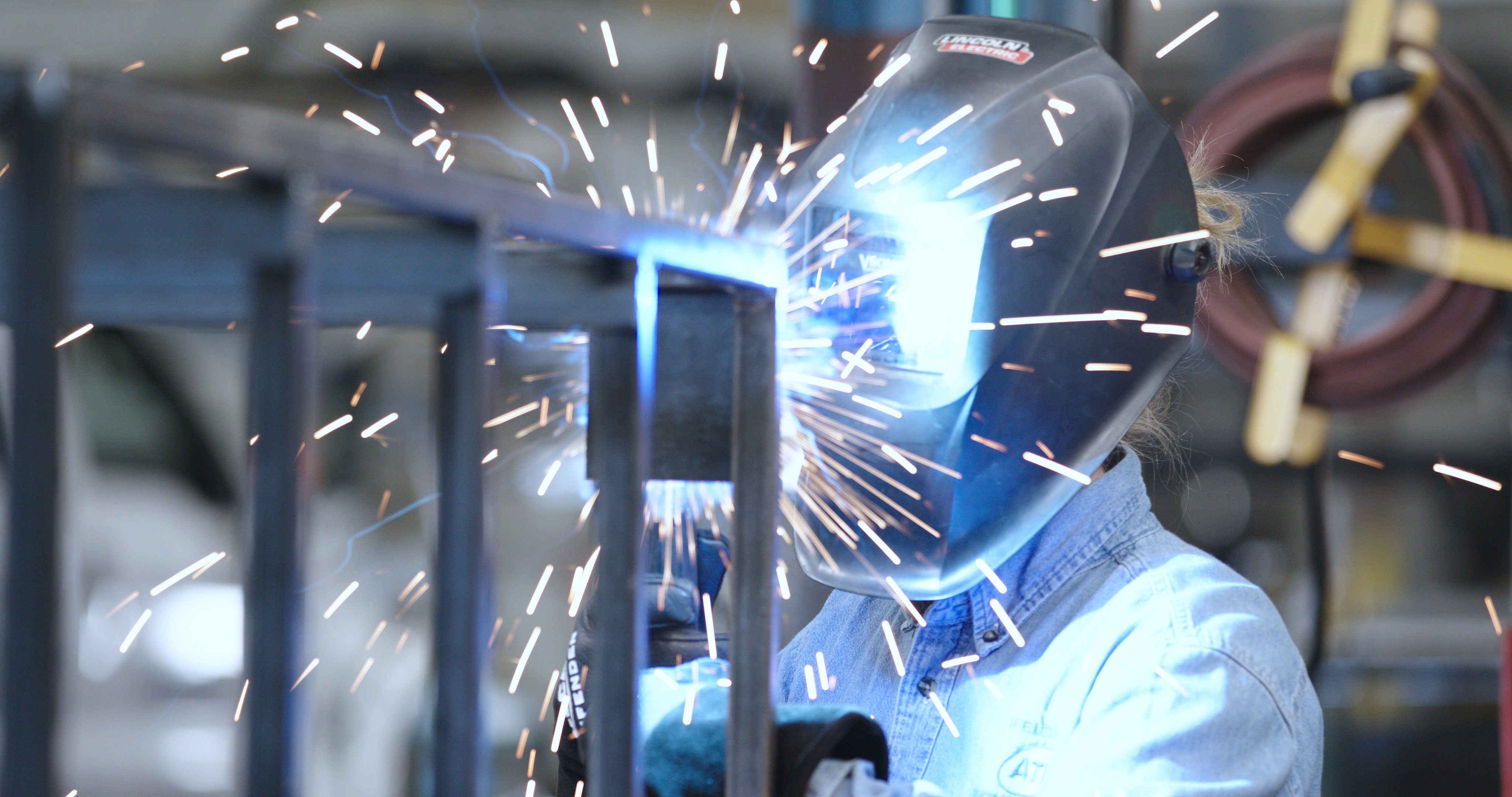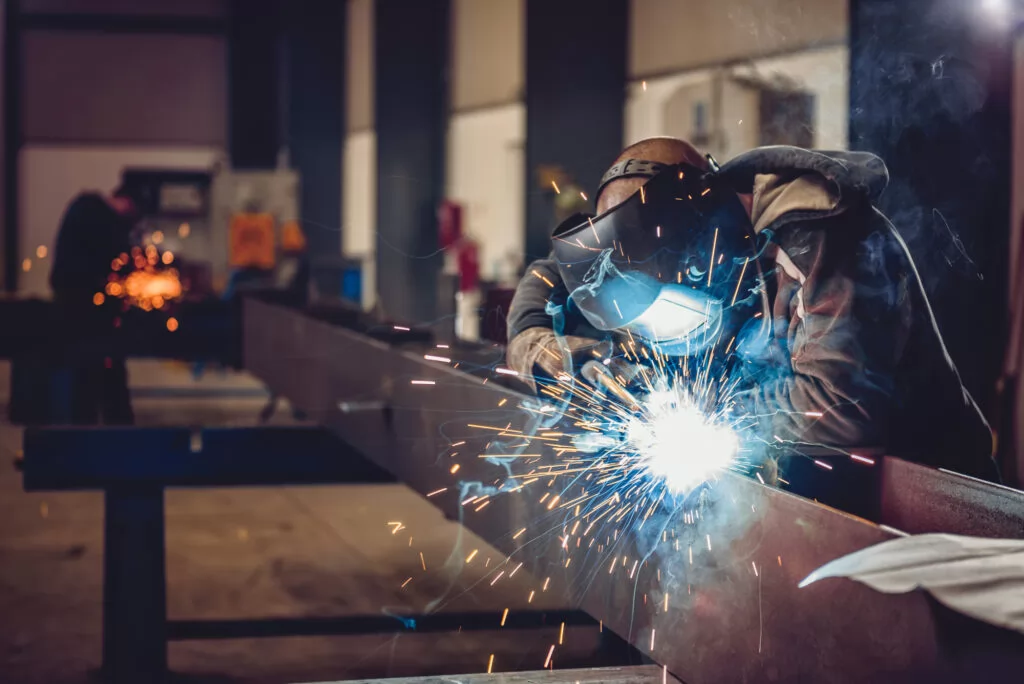Everything about Welding: Secret Insights Into Techniques and Best Practices for Success
Welding encompasses a range of techniques, each fit for details materials and applications. Comprehending these methods, such as GMAW, SMAW, and TIG, is essential for attaining suitable outcomes. The ideal tools and safety and security techniques can not be neglected. As preparation and fixing play vital duties in the welding process, grasping these components can considerably enhance the top quality of the final product. What are the essential aspects that guarantee a successful weld?
Understanding Different Welding Methods
Welding strategies include a selection of techniques, each suited to specific applications and materials. Amongst the most typical strategies are Gas Steel Arc Welding (GMAW), Shielded Steel Arc Welding (SMAW), and Tungsten Inert Gas Welding (TIG) GMAW, also referred to as MIG welding, is preferred for its rate and flexibility, making it ideal for thin materials. SMAW, or stick welding, is favored for its simpleness and effectiveness in exterior atmospheres, especially with thicker metals. TIG welding offers accuracy and control, making it suitable for detailed job and non-ferrous metals (Montana Mobile Welding and Repair Fabrication). Each method has its one-of-a-kind advantages and factors to consider, enabling welders to pick the finest technique based on the task's needs, material type, and wanted end results. Comprehending these techniques is necessary for successful welding
Important Welding Equipment and Devices
While numerous welding strategies need specific skills, the best tools and tools are similarly important for achieving top quality results. Important welding equipment includes welding machines, which differ depending upon the technique-- such as MIG, TIG, or stick welding. Safety equipment, consisting of aprons, handwear covers, and headgears, assurances safety and security and comfort during the process. On top of that, components and clamps aid safeguard materials in area, guaranteeing precision in welds. Consumables like welding rods, cable, and protecting gas are additionally vital components that affect the high quality of the weld. Additionally, devices such as mills and cutters assist in surface area preparation and post-weld ending up, contributing to an expert result. Spending in top notch devices inevitably boosts the performance and performance of welding tasks.
Safety And Security Practices in Welding
Proper security practices are necessary in the welding sector to protect workers from prospective risks. Welders need to put on ideal individual safety tools (PPE), including helmets with appropriate shading, handwear covers, and flame-resistant garments. Adequate air flow is crucial to lower exposure to unsafe fumes and gases generated during the welding procedure. Additionally, workers need to be learnt the correct handling of welding devices to avoid accidents. Fire precaution, such as keeping flammable products away from the welding location and having fire extinguishers easily offered, are required. Normal assessments of devices and work areas can help determine potential dangers prior to they bring about accidents. By adhering to these safety methods, welders can develop a safer working atmosphere and decrease threats connected with their trade.
Preparing Materials for Welding
Preparing products for welding is an important action that greatly affects the top quality and honesty of the final item (Fabrication). Proper preparation includes cleaning up the surface areas to eliminate pollutants such as dirt, corrosion, and oil, which can jeopardize the weld. Techniques such as grinding, fining sand, or utilizing solvents are frequently utilized to achieve a clean surface. Additionally, making sure that the products mesh snugly is vital; spaces can result in weak welds. It's likewise essential to take into consideration the positioning and positioning of the parts, as this will certainly impact the ease of welding and the last result. Lastly, selecting the ideal filler material and ensuring compatibility with the base steels is vital for accomplishing strong, sturdy welds
Tips for Getting High-Quality Welds
Accomplishing top quality welds requires interest to information and adherence to best techniques throughout the welding procedure. Correct joint preparation is necessary, guaranteeing surface areas are tidy and totally free from contaminants. Choosing the appropriate filler product and welding technique based upon the base steels is important for ideal bonding. Keeping regular traveling speed and angle while welding can advertise and stop issues uniformity. Additionally, regulating warm input is important; excessive heat can result welders for sale near me in warping and deteriorated joints. Regularly inspecting the welds throughout the procedure enables for instant changes if necessary. Lastly, utilizing proper post-weld therapies, such as cleansing and anxiety alleviation, can improve the sturdiness and stability of the weld, ultimately guaranteeing a successful end result.
Repairing Usual Welding Issues
Welding usually provides obstacles that can impact the top quality and honesty of the end product. Common concerns such as porosity, inconsistent weld grains, and overheating can occur, each needing specific troubleshooting techniques. Recognizing these issues is essential for welders to boost their skills and accomplish suitable results.
Porosity Troubles Clarified
Although porosity can often be forgotten, it continues to be a crucial concern in welding that can compromise the stability of a completed product. Porosity describes the existence of tiny gas pockets within the weld bead, which can lead and deteriorate the joint to premature failure. This issue normally arises from contaminants, wetness, or inappropriate securing gas coverage throughout the welding process. To mitigate porosity, welders must confirm that the base products are dry and clean, utilize appropriate securing gases, and preserve constant welding criteria. On a regular basis evaluating the tools and environment can also help determine possible problems before they materialize in the weld. Resolving porosity efficiently is vital for accomplishing strong, durable welds that satisfy high quality requirements.

Inconsistent Weld Beans
Irregular weld beads can considerably affect the quality and stamina of a finished product. Numerous factors contribute to this concern, consisting of improper traveling rate, inaccurate amperage setups, and irregular electrode angles. When the welder moves also rapidly, a grain may appear slim and do not have penetration, while moving also slowly can cause too much build-up. Furthermore, utilizing the wrong amperage can cause either damaging or too much spatter, both of which concession weld honesty. The welder's strategy, such as inconsistent lantern activity, can likewise bring about unequal grain look. To alleviate these troubles, welders should concentrate on preserving stable, regulated movements and making certain appropriate equipment settings to achieve harmony in their welds. Uniformity is vital to attaining strong and dependable welds.
Overheating and Warping Issues
Extreme heat throughout the welding process can bring about considerable getting too hot and contorting problems, influencing the architectural honesty of the work surface. These issues often manifest as distortion, which can jeopardize positioning and andeli welder fit-up, making further assembly challenging. Elements adding to overheating include the choice of welding specifications, such as voltage and take a trip rate, in addition to the sort of product being welded. To minimize these concerns, welders need to maintain consistent traveling rate and ideal warmth input while checking the work surface temperature level. Additionally, pre-heating or post-weld heat therapy can help ease stresses brought on by quick air conditioning - Montana Mobile Welding and Repair Fabrication. Normal assessment and adherence to best methods are essential in protecting against getting too hot and making certain the longevity and integrity of bonded structures
Frequently Asked Concerns
What Are the Occupation Opportunities in the Welding Sector?
The welding market uses diverse career chances, including positions as welders, teachers, designers, and inspectors. Professionals can operate in production, building, aerospace, and automotive industries, gaining from solid need and affordable incomes in different duties.
How Can I Enhance My Welding Rate Without Compromising Quality?
To enhance welding rate without sacrificing quality, one should practice efficient techniques, keep equipment, optimize settings, and boost hand-eye control. Routine training and looking for feedback can additionally significantly add to attaining quicker, top notch welds.
What Accreditations Are Offered for Welders?
Countless accreditations exist for welders, including those from the American Welding Society (AWS), the National Center for Construction Education and Research (NCCER), and numerous industry-specific organizations. These qualifications boost employability and show skill like it proficiency.
Just How Does Welding Influence the Qualities of Metals?
Welding influences the buildings of steels by modifying their microstructure, which can bring about changes in solidity, ductility, and toughness. Warmth input and cooling prices during the procedure considerably impact these product qualities.
Can I Weld Dissimilar Metals Together?
